| Home > Policy > White Paper, Notice, Announcement > White Paper > Japanese Government Policies in Education, Science, Sports and Culture 2000 > Part 2 Chapter 8 Section 6 4 | ||
Of the various types of intangible cultural properties, including performing arts such as Kabuki, Noh, and Bunraku as well as craft techniques such as lacquer and textile work, the national government designates those that are particularly significant as important intangible cultural properties, and authorizes individuals or organizations which embody these properties to a high degree to maintain them. In June 2000, one performing art-classical Ryukyu music-and three craft techniques, including "tatenishiki" (a weaving technique) were designated, and five people were authorized as holders of important intangible cultural properties (so-called Living National Treasures). In addition, an additional 22 people were authorized as members of holding bodies for two important intangible cultural properties (including Gidayubushi).
The Agency for Cultural Affairs furnishes special grants to holders of important intangible cultural properties in order to refine and improve their techniques and foster successors, and also provides subsidies for projects to foster successors conducted by holders and holding bodies.
In addition, in order to preserve and succeed local traditional culture, the Agency conducts projects to promote the succession of traditional culture to provide assistance for activities to foster successors and activities to revitalize traditional culture conducted by local governments.
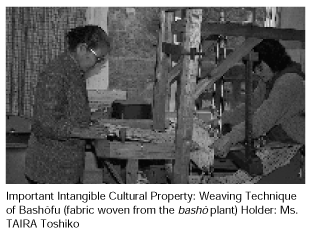
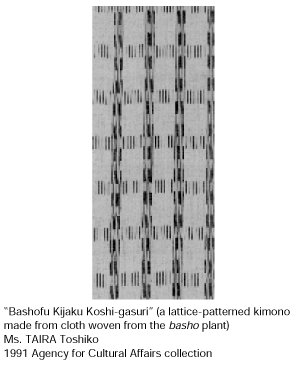
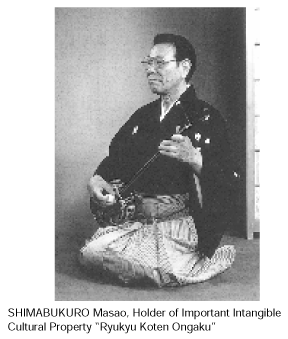
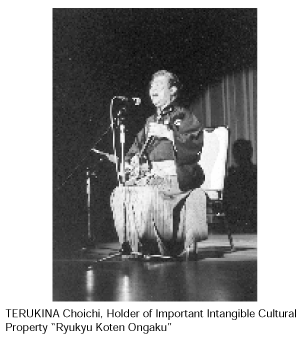
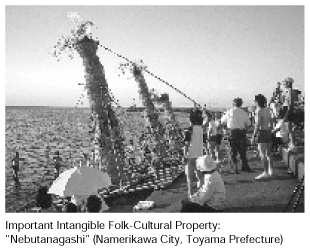
Regarding the designation of folk-cultural properties, in December 1999 one property-"Fishing Implements from the Go River Basin" (Hiroshima Prefecture)-was designated as an Important Tangible Folk-Cultural Property and eight properties, including the "Yusa Lunar New Year Festival" (Yamagata Prefecture), were designated as Important Intangible Folk-Cultural Properties.
Folk-cultural properties are part of the foundation of daily life, and recently, they have quickly become in danger of extinction or transformation. Consequently, the Agency for Cultural Affairs is providing assistance to the following activities:
| Back to Top | MEXT HOME |